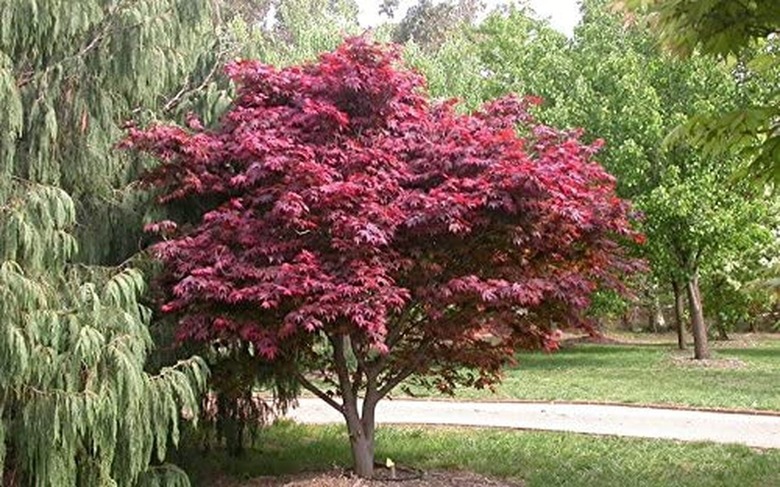My Japanese Red Maple Has Dried, Curled-Up Leaves
We may receive a commission on purchases made from links.
The Japanese maple is a small tree with a touch of magic. Its beautiful crimson and orange leaves are often deeply lobed and drop into richer, fiery shades in autumn. Although the tree is relatively easy to care for when established, it does have specific cultural needs. When the lacy leaves wither, dry, and curl, it almost always indicates that one or more of those needs are not being met.
Meet the Japanese Maple
Meet the Japanese Maple
Describing a "typical" Japanese maple (Acer palmatum) is difficult given the astonishing variation between cultivated varieties. Generally, their form is graceful and charming. These lovely trees are usually smaller than other maples, but a specimen can be anywhere from 6 to 25 feet tall depending on the cultivar or species.
Some species are upright, others are rounded, and still others are weeping. The lobed leaves range in color from forest green to scarlet to purple, and many turn dramatic shades in autumn. All have elegant, layered branching. Trees bear small flowers that produce twin samara seed pods.
Plant a Japanese Maple
Plant a Japanese Maple
Japanese maples look so elegant and fancy that it surprises gardeners to learn that they are fairly easy to grow in U.S. Department of Agriculture plant hardiness zones 5b through 8a. They can be grown indoors if given a colder location for winter dormancy. Dwarf cultivars are best for houseplants.
Siting the tree appropriately is of utmost importance to the health and vitality of the tree. Once the seedling is established in an appropriate site, its cultural care is not complex. If sited incorrectly, the tree will not thrive. The key is correct sun exposure.
These are understory trees in the wild, getting only dappled sun that filters in between the branches of taller trees. This is the tree's ideal setting, both in terms of exposure and wind protection. Because of their beauty, many Japanese maples end up planted front and center in direct sun, unprotected by taller tree branches. Leaves exposed to direct sun, especially afternoon sun, or strong winds will wilt and curl from sun scorch.
Care for a Japanese Maple
Care for a Japanese Maple
In addition to a dappled sun location, Japanese maples require well-drained soil with high organic content and regular watering. They are not drought tolerant, and young leaves will wilt and wither when drought stressed. Newly planted Japanese maples need even more water during the time their root system is establishing, and failure to irrigate sufficiently can result in transplant shock. These leaves develop brown margins and often drop, and the tree can die.
Excess fertilizer is another issue that can cause leaves to wilt and die. Never fertilize a tree right after transplant and feed them with a light hand at any time. They don't need much fertilizer, especially if you worked organic compost into the soil before planting. If you do opt to fertilize, use a slow-release fertilizer that breaks down gradually.
Generally, healthy Japanese maples are not particularly vulnerable to diseases and pests, but it can happen. Keep your eye out for insects on the leaves or for foliage damage. Treat as appropriate.
